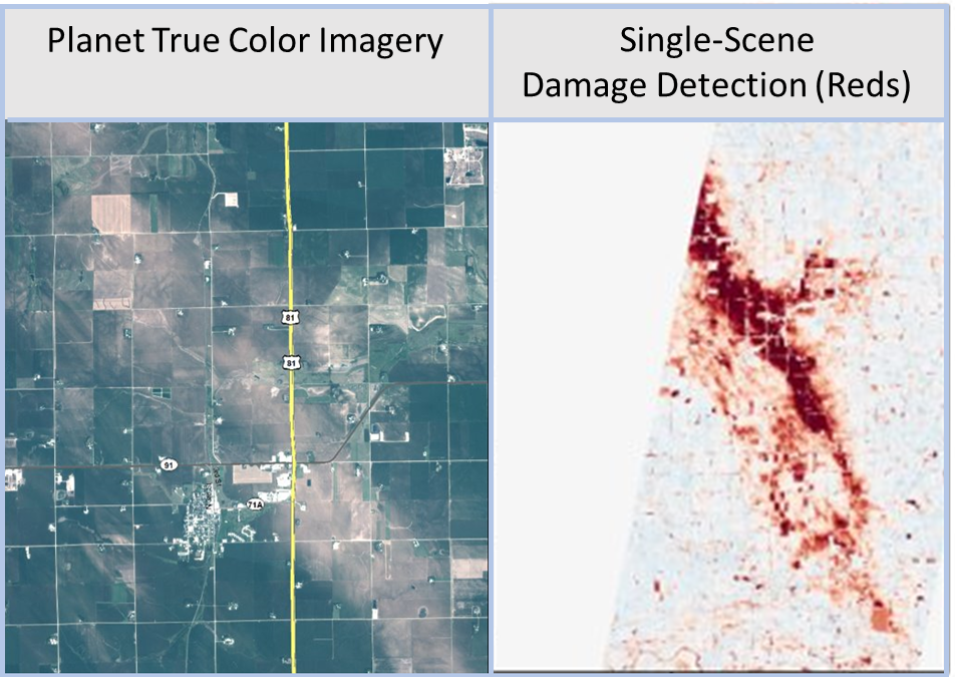Satellite data provider Planet Labs Inc. (Planet) received a NASA contract expansion to provide satellite imagery for scientific purposes to all U.S. federal civilian agencies, the National Science Foundation (NSF), and all federally- and NSF-funded contractors, subcontractors, partners, and grantees. This exceptionally broad access to Planet imagery applies to roughly 280,000 eligible data users across the U.S. federal government, according to Planet.
NASA Expands Contract with Planet Labs Inc. for Satellite Imagery
Left image: True color imagery from the PlanetScope constellation showing agricultural hail damage from a severe weather event on 11 August 2018. The hail damage is seen as a light brown area extending from the upper left to lower right of the image. Right image: Mapping of hail damage from the left image using a statistical detection scheme. The improved temporal resolution of the Planet data has the potential to complement existing sources of high-resolution satellite imagery. Image: Andrew Molthan, NASA's Marshall Space Flight Center in Huntsville, AL.
Planet imagery is provided through NASA’s Commercial SmallSat Data Acquisition (CSDA) Program, and the contract modification expands access to imagery from the company’s PlanetScope and RapidEye satellite constellations. In addition, Planet will provide a comprehensive catalog of data, associated metadata, and additional information. To obtain access to Planet data, please submit a CSDA Program Authorization Request Form. To read the End User License Agreement (EULA) between NASA and Planet and for more information about the imagery, please see the CSDA Commercial Datasets webpage.
Since the first NASA/Planet contract in 2019, scientists have leveraged Planet imagery for a wide range of research projects focused on climate change, biodiversity loss, and complex sustainability problems. So far in 2021, researchers have used Planet imagery available through NASA's CSDA program to monitor melting summer ice in Greenland, evaluate corn and soybean yields at the sub-field scale, map snow-covered areas via machine learning, and investigate the causes behind the massive Chamoli landslide in India.
CSDA is a component of NASA’s Earth Science Data Systems (ESDS) Program. Formerly known as the Private-Sector Small Constellation Satellite Data Product Pilot Project, CSDA was established in 2017 to identify, evaluate, and acquire remote sensing imagery and data that support NASA’s Earth science research and application activities.
